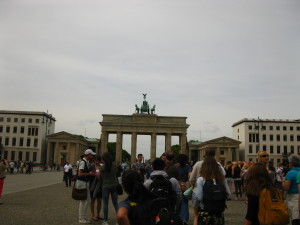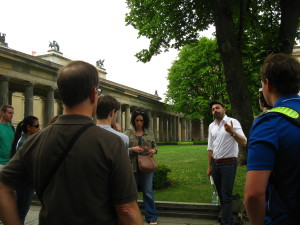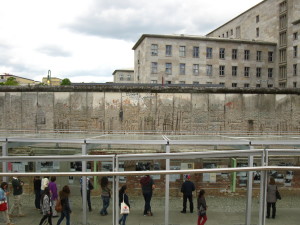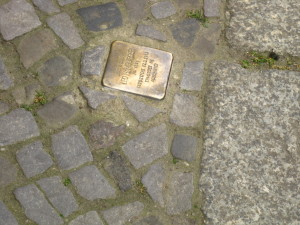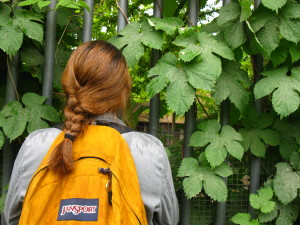At this point, we were all a little lost. Humanities class for the day had involved a walking tour of Berlin that ended at Brandenburger Tor. None of us were sure how to get from there to the Embry-Riddle WorldWide campus, a few rooms in a building. The instructions the tour guide gave us weren’t much help, either, considering we had been in the city for less than a week. After several wrong transfers and too much walking around stations, we arrived at Electrical Engineering I…significantly late. Dr. Demirkiran, the professor for EE335, was flexible, understanding. We all went for lunch and then proceeded to spend approximately six hours in class, covering content until it was clear no more content would enter our brains. This was not how college worked on main campus, but I was not complaining. It was a lot more interesting this way.
In one day, we had learned about Berlin the city and some of its major landmarks and the U-bahn and S-bahn. We learned that the route from Kurfürstenstrasse passed through “the stripper district” (a la experience and the tour guide), so we should go to class via Nollendorfplatz instead. We learned some basic circuit-y goodness and that Dr. Demirkiran may have some of the best anecdotes in existence.
Summer abroad was definitely better than any regular semester, and I’m not just saying that because the classes are pass/fail (though that is certainly a plus). Studying abroad is a lot more than just cramming information into our occasionally receptive heads.
The humanities class, Memory and Memorialization, taught by Dr. Silverman, met every morning at various locations, primarily in Berlin but also, for the few days we were there, in Paris. The day of the walking tour, day two of the official start of classes, we met at Hakescher Markt, a slightly touristy hub of restaurants and stores near Museumsinsel (Museum Island).
With the focus on memory, the class involved a lot of museums, monuments, and memorials. We visited Topography of Terror, an open-air museum about WWII and Berlin. The interior part of the exhibition is housed in the old SS headquarters, and a portion of the Wall extends along the street adjacent to the exterior exhibit.
The Jewish Museum was an architectural marvel that discussed the culture and history of the Jews not only through its exhibits but also through its experiential and immersive design. The Stolpersteine, one of the most peculiar and interesting methods of memory we studied, involved small brass plaques integrated into the cobblestoned sidewalks in front of the last known residences of various victims of the Nazis. The Stolpersteine were placed around Berlin by an artist, not the government or some organization dedicated to remembering something.
By visiting so many museums and memorials and walking all around Berlin, we really immersed ourselves in the city. We thought about the city not through the lens of a tourist looking for the flashy, glitzy, and beautiful but as people who, for a short time, had to live and learn within a new culture.
Electrical Engineering I, in contrast to Humanities, met in a classroom every afternoon. We usually spent several hours a day covering content. However, Dr. Demirkiran always interspersed the material with anecdotes. When we arrived or stayed late enough for hunger to take over, he joined us on our quest for food among the variety of options (falafel, kebap, sushi) just off Nollendorfplatz station. Despite the limited amount of time available, Dr. Demirkiran successfully covered the entirety of the necessary material for EE335.
After class, Dr. Demirkiran sometimes took us to cool places around Berlin just for kicks. Perhaps one of the best parts of studying abroad is the more casual interaction with the professors. We got to know our professors as people outside of the classroom setting, which not only made approaching them with questions easier but also made the experience a lot more fun.
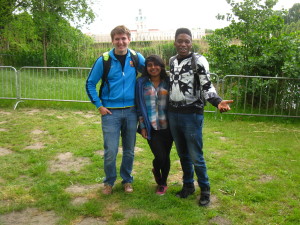
Two of my classmates (Michael and Franck) and I at Schloss Charlottenburg…trying to decipher Dr. Demirkiran’s photo instructions.
Studying abroad is not the typical learning experience. The classes are structured differently. Humanities was an immersive learning experience, which was a lot of fun and a lot more meaningful than a few texts and some theoretical discussions. Electrical Engineering lasted for several hours, as opposed to many more one hour classes. I actually found the different helpful and more enjoyable; drawing connections between concepts was easier, and less time was wasted reviewing previous lectures.
Both classes assigned homework and had assessments, but they were few and void of busy work. Humanities had readings assigned to accompany the sites visited during the class and asked us to think critically of the places we visited and their impact on the process of remembering via questions posted on the discussion board and two papers. Electrical Engineering had homework every few days, practice problems that tested the concepts covered in the preceding lessons and that we handed in electronically. A final exam consisting of an in-class and take-home element assessed our comprehension of the course.
Studying abroad did involve actual studying. However, the class formats were quite different from the usual semester formats, interaction with professors was more relaxed, and learning involved a lot more than just academic content.


